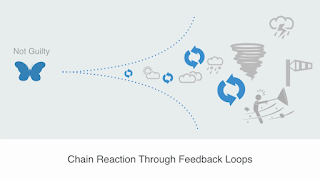Information reduces Uncertainty
Last month I talked about teams and feedback. The last two weeks
I have been working in south-east Africa teaching and training petroleum people
how to build a safety culture. Much has been written on HSE but, as far as I am
aware, cybernetics has not yet been applied as a useful tool for governance.
Risk
prevention and risk management are methods to control risks, but often do not
consider the cybernetical law of requisite variety or philosophical solutions
such as a science of ethics. To prevent and control HSE risks, we have to first
know ourselves. Who am I? How do I react? How do I communicate? These so-called
‘Human Factors’ are, in my opinion, insufficiently explored and understood. In
Africa we spoke about narcissism, arrogance, recklessness and other human
character traits and concluded that they are always dependent on the
interaction with others. On an island alone, people would not have much use for
such traits.
Let me first explain the Law of Requisite Variety, which was
proposed by Ross Ashby in 1956.
‘A situation can only be controlled if the variety of the controller matches
the variety of the situation to be controlled.’ It is
impossible to prepare for every variable so most variety is absorbed through
relationships with other systems. Only Variety can absorb Variety.
Every
organisation generates tremendous variety and tries to control it in its own
way through HSEQ rules, checklists or regulations. Human variety, environmental
variety, social variety, regulatory variety change all the time and therefore
cannot be controlled. A company is a living system and needs to maintain and
develop sufficient internal variety to be able to absorb (counter-balance)
‘outside’ variety. This means training people to have the combined knowledge,
experience, expertise, will and influence to do so.
For HSE or
risk management, only enough variety in your system can absorb, or control HSE
risks originating from the outside and also the internal variety.
What an
organisation can do is to insist that ‘all’ information is centralised and made
available. Often management does not or cannot hear (or listen to) what is
going on, because the company is managed in a top-down manner. But, as the
title of this column shows, information is anything that reduces uncertainty and,
next to energy and matter, it is the way our universe operates.
The
solution therefore to maximise risk prevention or risk management is to make
sure that all the parts of the system (the organisation) communicate constantly
and are able to adapt to new situations. When outside variety changes, the
organisation directly adjusts by learning and adding more counterbalancing
knowledge, skills and wisdom.
This is a
continuous process and can be managed by cybernetical steering of positive and
negative feedback. It becomes a natural tool, not to manage or control HSE
risks, but to prevent them,



Reacties
Een reactie posten